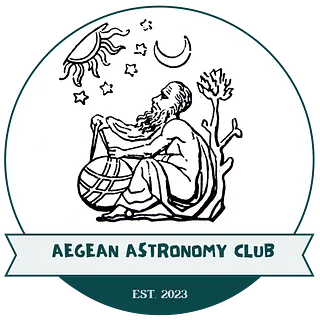
Astronomy is the oldest physical science and a life-time companion for human's deepest philosophical quests. Astronomy is a very entertaining activity as well; Impressive galaxies, colorful nebulas, super giant stars, massive black holes, supernova explosions, magnificent star clusters, dazzling pulsars, planets, comets, asteroids and many more are waiting patiently in the vastness of space to be observed.
Does the Universe exist, if we're not looking?
Our Journey
Once upon a time there was a little, tiny “thing”, called a singularity, which was containing all the matter and energy we observe today. 13.8 billion years ago, singularity instantly inflated, creating the beginning of space and time and a constantly expanding Universe.
In a very short time photons released and “…let there be light”. The first generation of stars born, lived and died in a spectacular supernova explosion, filling the young at that time Universe with life giving ingredients, which actually led to…. (to be continued, BOOK NOW)
AAC’s Stargazing Experience is divided into 3 thematic sections of a total 2 hours duration:
1. Introduction – Observational Astronomy (approx. 1 hour)
In this first section we will briefly talk about the history of Astronomy, about ancient civilizations and their unbelievable knowledge in Astronomy, building enormous structures oriented to celestial objects. Then we will talk about modern Astronomy, about the officially recognized constellations and how can we orient ourselves according to the stars.
Then, we will examine our neighborhood; Our life-giving sun and how it was formed, about the 8 planets of our solar system, some of them having fascinating moons, the closest stars to the Earth, the magnificent nearby Andromeda Galaxy and where is located the most dominant object in our galaxy, SgrA* the massive black hole in the center of the Milky Way.
During this section, some of the most beautiful stories from the ancient Greek mythology will be spoken, such as the touching mother and son story of Ursa Major and Ursa Minor, who saved princess Andromeda, who Berenice was and why her hair(!) became a constellation and many more.
2. Philosophical Astronomy (approx. 30min)
In section 2, we will discuss some of the most mind-bending Astronomy facts and queries, and we will bend over Cosmos’ biggest mysteries.
Which are the possibilities for a Universe to come into life out of nothing? And how possible is life to emerge? Is it true that actually we are stardust?
Scientists estimate that there are more stars in the Universe than grains of sand on Earth. Is this true? Some of them are also saying that we are living in a simulation. Is this possible? What quantum physics has to say about that?
And of course, the old times question; Is there any purpose for human life? Which is mine?
Let’s find it together…
3. Photography (approx. 30 min)
In this last section, we will see some tips and techniques about night photography and how we can set our camera for low light conditions.
Finally, we will be able to capture some great images, acquiring your unique personal and worthy-having souvenir from a starry Aegean night.
Throughout the three sections AAC’s telescope will be used, bringing us a little closer in space and time. Into our aperture we are going to enjoy* the craters of our moon in detail, the enchanting colors of Jupiter, the amazing rings of Saturn and the out of the world reddish Mars color. We will also be captivated by the seductive colors of magnificent nebulae and amazing star clusters.
*Subjects to change depending on the season, the exact position of the celestial objects as seen from Earth and the observational conditions.